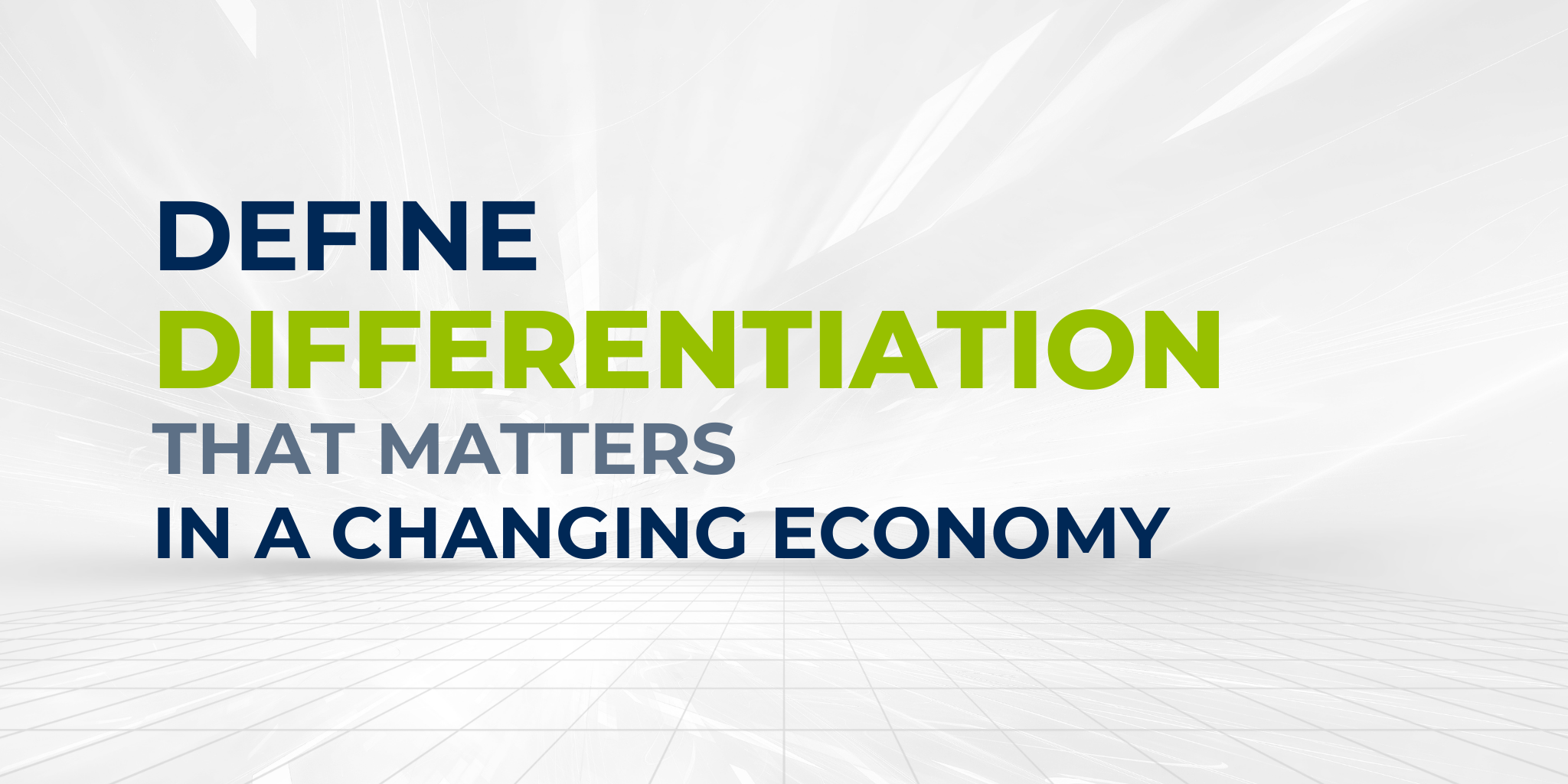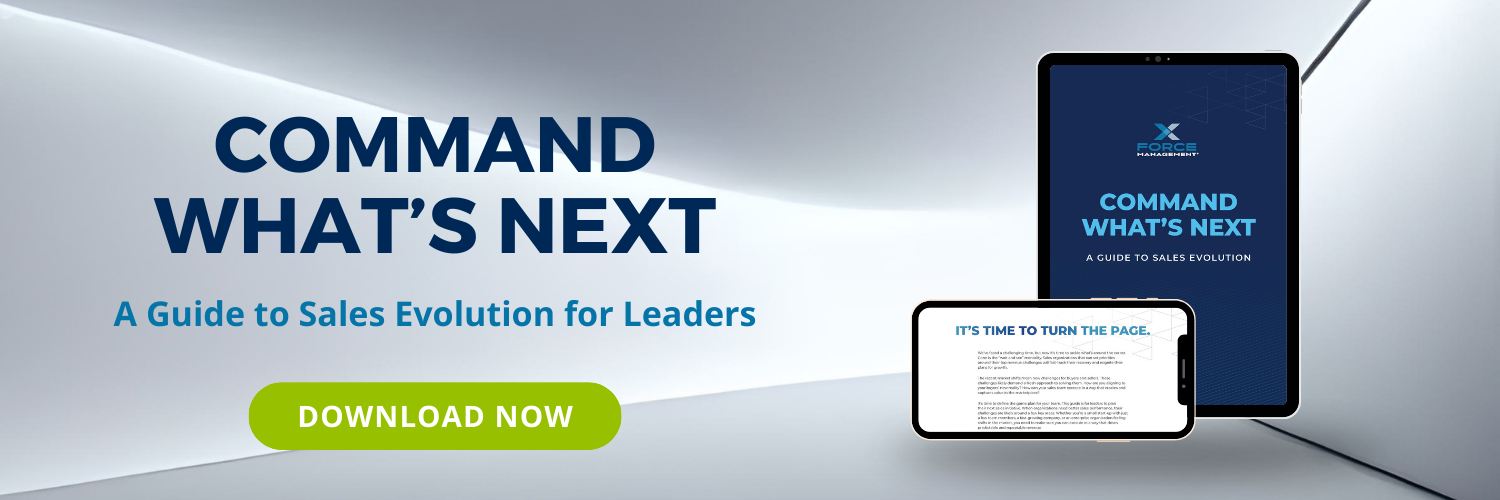
How to Define Differentiation that Matters in a Changing Economy
Categories: Sales Planning | Company Alignment | Scaling Sales
Competitive differentiation is at the core of every organization’s sales strategy. It’s why customers choose your solution and why sellers get excited about bringing your product to market. As markets change, though, customer needs change too. It’s possible that your differentiation may need to adapt to fit these changing customer behaviors.
Chuck Bamford, author of The Strategy Mindset and The Strategy Mindset 2.0, recently joined John Kaplan and John McMahon on the Revenue Builders Podcast to talk about how sales leaders can define, and more importantly, execute a great differentiation strategy.
Today, we’re breaking down three steps to redefining your differentiation strategy in the changing economy, using insights from their conversation:
1. Understand the Buyer Journey
.png?width=752&height=282&name=chuck%20bamford%20quote%20(2).png) To define a differentiator that actually matters to your customer, you have to start by seeing the sales process through their eyes. That means getting input from every level of your organization, particularly those in customer-facing roles. Your customers’ needs are changing with the market, but the good news is that your customer-facing teams have a front-row seat. Get serious about collecting as much customer data as possible from these roles and understanding every part - even the smallest parts - of your buyer’s journey.
To define a differentiator that actually matters to your customer, you have to start by seeing the sales process through their eyes. That means getting input from every level of your organization, particularly those in customer-facing roles. Your customers’ needs are changing with the market, but the good news is that your customer-facing teams have a front-row seat. Get serious about collecting as much customer data as possible from these roles and understanding every part - even the smallest parts - of your buyer’s journey.
Chuck Bamford refers to this as finding differentiation in the orthodox. “Strategy has got to be so much more than just cool new things. It's got to be making sure we're doing all the things that we're supposed to be doing, well.”
We often look for differentiation in the unorthodox. We think of differentiation as an element of our product offering, but the truth is that every customer interaction is an opportunity for differentiation. Every element of the sales process - response time, billing, implementation, Quarterly Business Review - is an opportunity to frustrate or delight your customer. If you can get true internal alignment and alignment with your customer to deliver a premium experience on run-rate interactions, it has the ability to set you apart from your competition who may not do the same, and reduce churn with existing customers.
2. Make it Defensible
One of the most common reasons that sales organizations fail to execute on a differentiation strategy is lack of alignment at the seller level. Company strategies are big and overarching and don’t always take into account the day-to-day application. Start by understanding sellers’ daily motion, obstacles and experience to ensure you can communicate where your strategy fits into that.
As Chuck Bamford put it on the Revenue Builders Podcast: “Everything that leadership does is hypothesis. Getting leaders to think in terms of the activities they want employees to do that will lead to those KPIs is hard work.” Take the time to outline the specific actions that will enable sellers to move company objectives forward, and give managers a system for holding sellers accountable to those actions.
Defining a defensible differentiator means providing the language, content and guidance necessary for sellers to defend your differentiation against competitors in front of the customer. Invest in the knowledge and skills necessary to make sellers feel supported and capable of executing on your objectives. Provide metrics and success stories that support the differentiation strategy.
3. Analyze and Iterate
If strategy is just hypothesis, it must be tested. Leave room in your strategy to evolve and iterate. Instead of just executing reviews on lost opportunities, ensure you have a defined process for executing reviews on the opportunities you’ve won. Win reviews can often be more informational than loss reviews because the client has a vested interest in your success and partnership. Here are four questions recommended by John Kaplan in his conversation with Chuck Bamford:
- Why did you buy from us?
- Where are we not as good as we think we are?
- Where are we better than we think?
- Who would you have bought from if not us?
Win reviews are a great way to stay involved in the customer journey and how it’s evolving, continuously getting feedback and success stories to feed back into your sales motion.
Harness the Power of Iterative Strategy
The best sales organizations stay relevant because they’re always evolving. Keep your sales organization at the forefront of the industry, ready for whatever comes next in the market, with strategies from elite sales leaders. We created a guide for sales leaders who are seeking the next stage of evolution for their teams. Download Command What’s Next: A Guide to Sales Evolution and get specific action items for diagnosing what’s holding you back, engineering a strong iterative sales process, and establishing an operating rhythm that helps you exceed sales goals.


